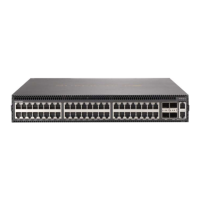5-1
Chapter 5
Making Network Connections
This chapter focuses on making connections to SSE-X3348T/SSE-X3348TR switch
network interfaces, including how to install optional transceivers, and details on network
cable specifications.
The SSE-X3348T/SSE-X3348TR switch features 48 10G RJ-45 ports, four 40G QSFP+
transceiver slots, and two 1G RJ-45 ports. The sections that follow describe these
interfaces.
5-1 Cable Labeling and Connection Records
When planning a network installation, it is essential to label the opposing ends of cables
and to record where each cable is connected. Doing so will enable you to easily locate
inter-connected devices, isolate faults and change your topology without need for
unnecessary time consumption.
To best manage the physical implementations of your network, follow these guidelines:
• Clearly label the opposing ends of each cable.
• Using your building’s floor plans, draw a map of the location of all
network-connected equipment. For each piece of equipment, identify the devices to
which it is connected.
• Note the length of each cable and the maximum cable length supported by the
switch ports.
• For ease of understanding, use a location-based key when assigning prefixes to
your cable labeling.
• Use sequential numbers for cables that originate from the same equipment.
• Differentiate between racks by naming accordingly.
• Label each separate piece of equipment.
• Display a copy of your equipment map, including keys to all abbreviations at each
equipment rack.

